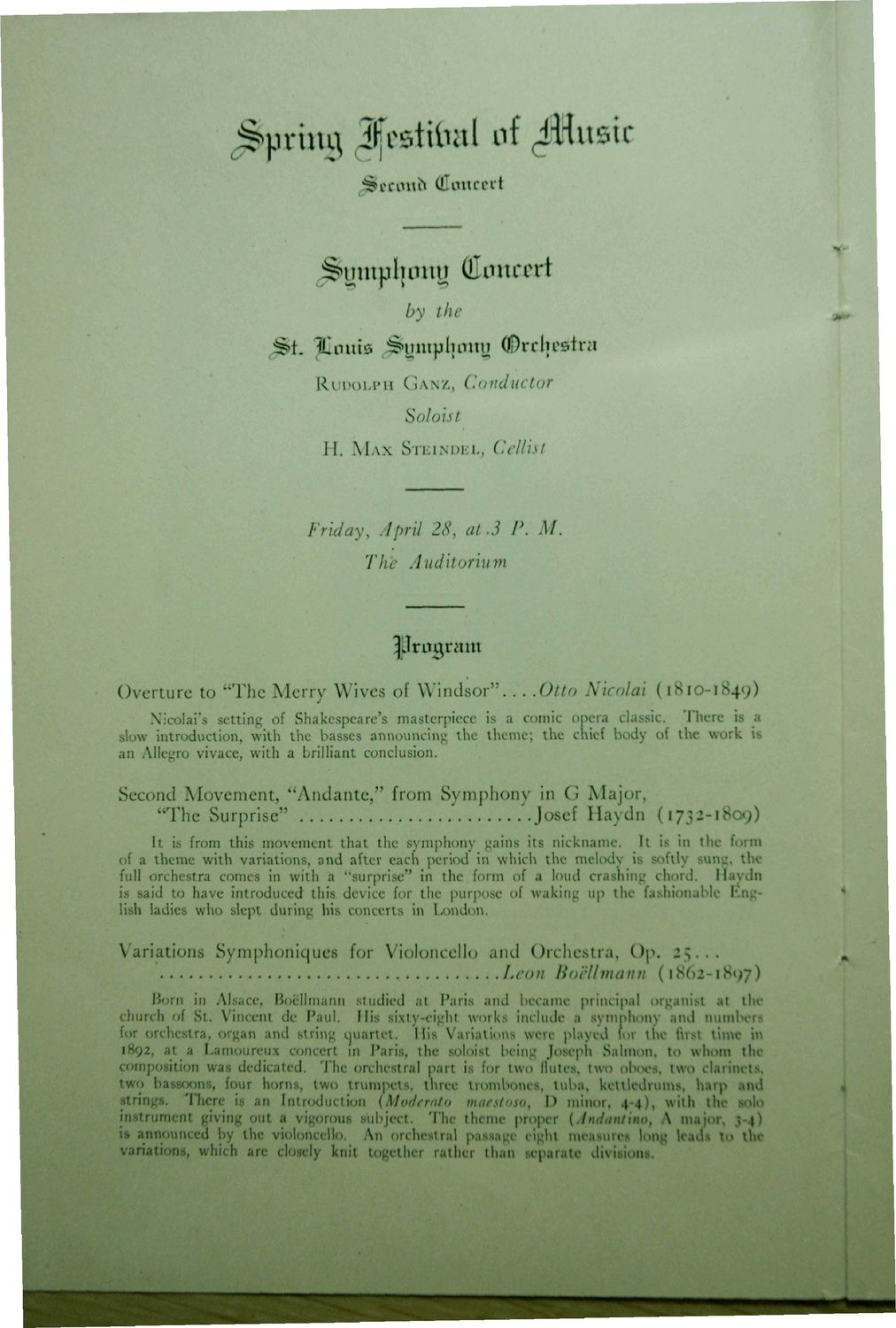| |
| |
Caption: Dedication - Smith Music Hall
This is a reduced-resolution page image for fast online browsing.

EXTRACTED TEXT FROM PAGE:
spring Se&tt&al of ^ u ^ t c J&ettttih (ilinu'iM't by the RUDOLPH GANZ, Conductor Soloist H. M A X STEINDEL, Cellist Friday, April 28, at.3 P. M. The Auditorium ^fragrant Overture to "The Merry Wives of Windsor" Otto Nicolai (1810-1849) Nicolai's setting of Shakespeare's masterpiece is a comic opera classic. There is a slow introduction, with the basses announcing the theme; the chief body of the work is an Allegro vivace, with a brilliant conclusion. Second Movement, "Andante," from Symphony in G Major, "The Surprise" Josef Haydn (1732-1809) It is from this movement that the symphony gains its nickname. It is in the form of a theme with variations, and after each period in which the melody is softly sung, the full orchestra comes in with a "surprise" in the form of a loud crashing chord. Haydn is said to have introduced this, device for the purpose of waking up the fashionable English ladies who slept during his concerts in London. Variations Symphoniques for Violoncello and Orchestra, Op, 2 5 . . . Leon Boellmann (1862-1897) Born in Alsace, Boellmann studied at Paris and became principal organist at the church of St. Vincent dc Paul. His sixty-eight works include a symphony and numbers for orchestra, organ and string quartet. His Variations were played For tnc first time in 1892, at a Lamoureux concert in Parts, the soloist being Joseph Salmon, to whom the composition was dedicated. The orchestral part is for two flutes, two oboes, two clarinets, two bassoons, four horns, two trumpets, three trombones, tuba, kettledrums, harp and strings. There is an Introduction (Modcrnto maestosot D minor, 4-4), with the aolo instrument giving out a vigorous subject. The theme proper {dndantino, A major, 3-4) is announced by the violoncello. An orchestral passage eight measures long leads to the variations, which are closely knit together rather than separate divisions.
| |